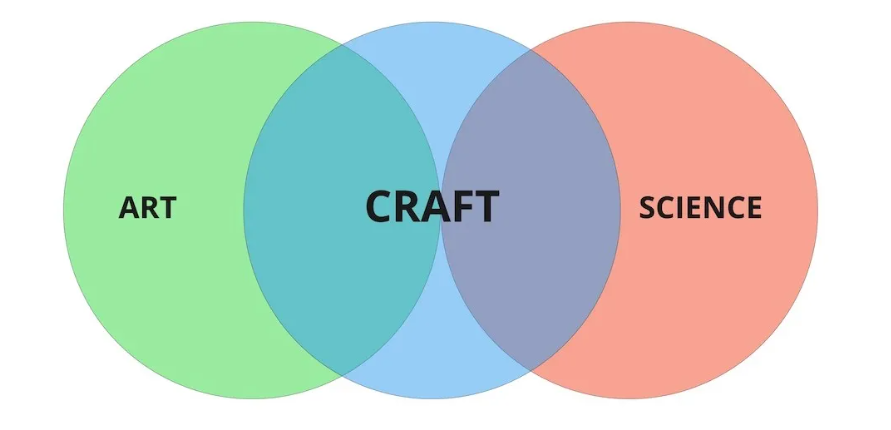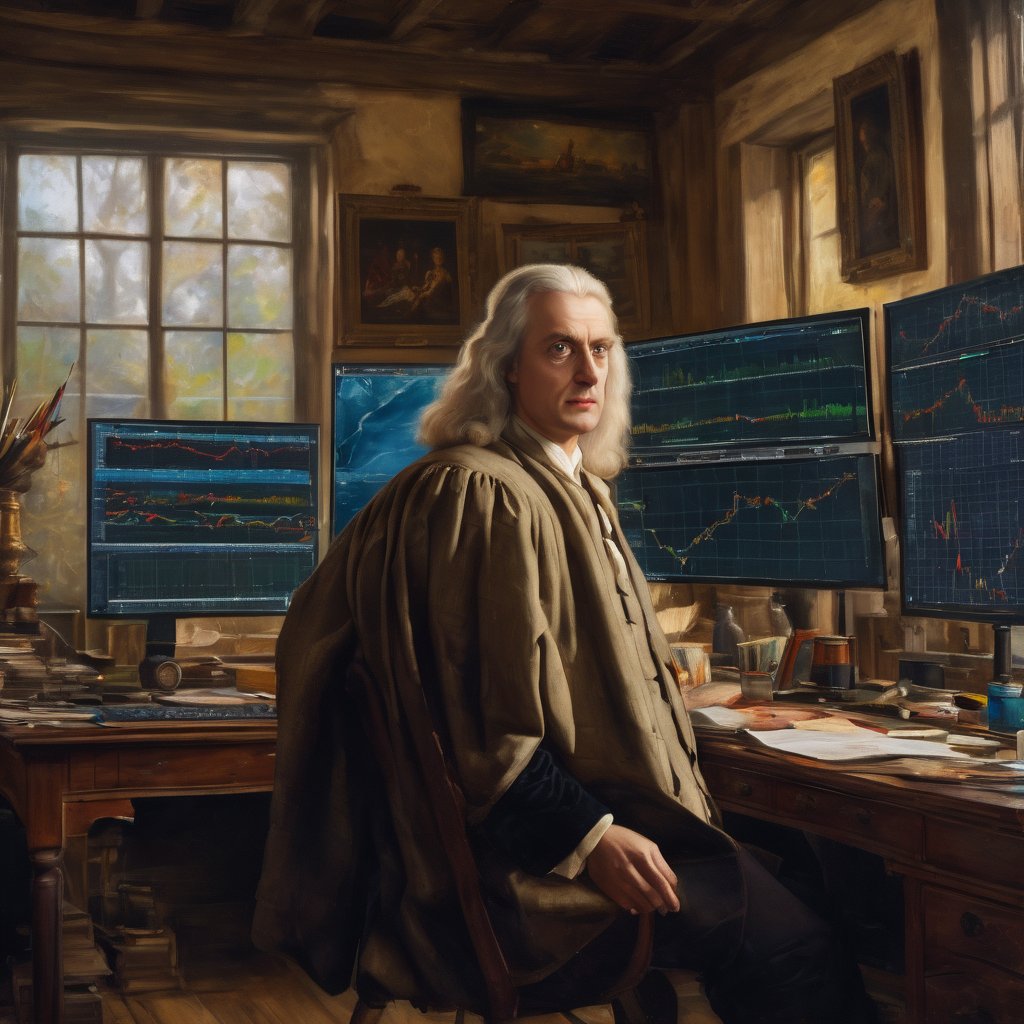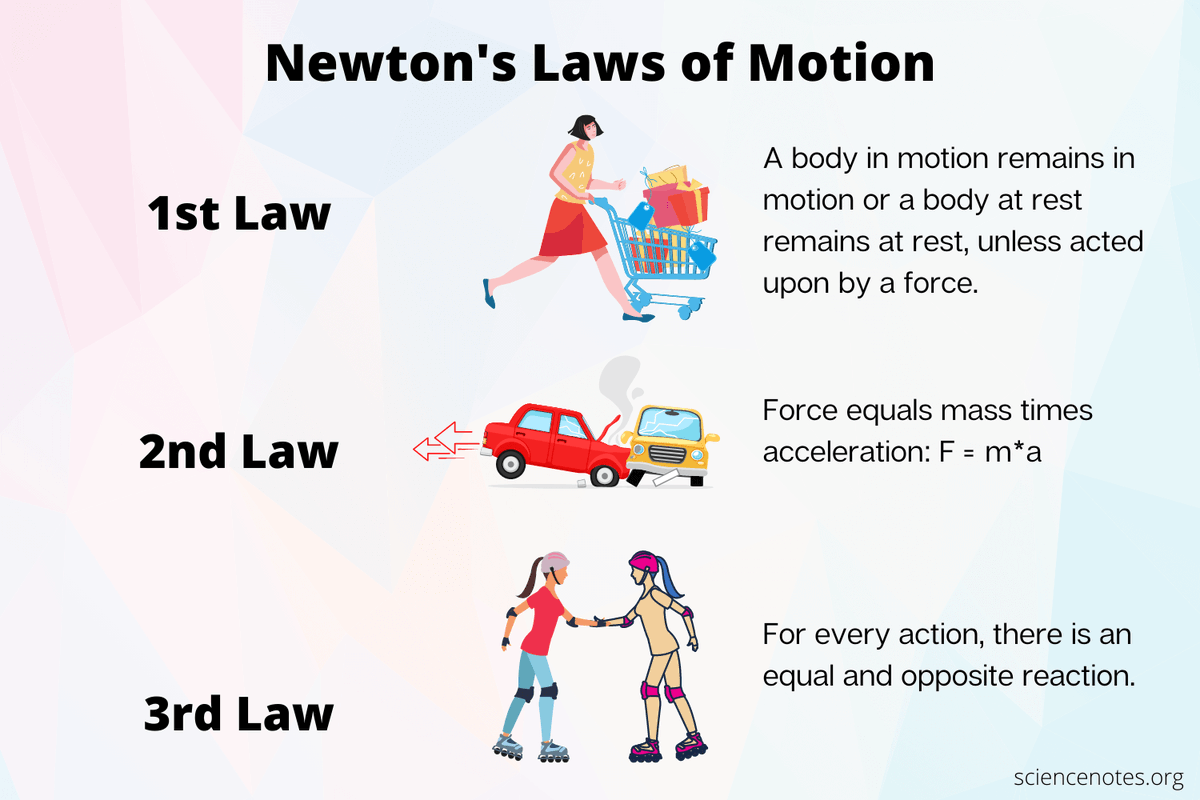All meaningful endeavours in life stimulate your mind, satisfy your emotions, and fill your pockets. These practices are where science, art, and craft converge. It is ikigai.
Trading is ikigai

Science
According to the CBSE textbooks, science is defined as objective observation that explains the basic rules of nature.Understanding how capital markets work involves studying human behaviour and identifying generalizations, theories, or laws that explain the causal relationship between supply and demand. For me, it is the physics of the financial world, where market participants rely on faith in the repetition of patterns of human behaviour in price movements.
Most trading setups can be categorized into three types: Breakout, Anticipation, or Mean Reversion. These setups must adhere to the scientific rules of market momentum, which are enduring and do not change. By basing your trading on these rules, you can develop lasting edges.


Newton’s First Law of Momentum
- A trend will persist in its current state, unless it demonstrates signs of weakness within the trend.
- If an up or down trend exhibits weakness, we expect a higher probability of a complex pullback, which could be of extended duration or involve multiple swings, rather than a reversal of trend.
- A sideways trend is expected to continue as is, unless it shows indications of strength towards the range boundary or gets acted on by a catalyst force.
- Stocks with a contraction in volatility tend to experience a breakout in the direction of momentum.
Newton’s Second Law of Momentum
- Trends triggered by earning breakouts, longer bases, sectoral triggers, or under-ownership tend to accelerate over a longer period and with greater magnitude.
- Lower Market Cap and Lower Float Stocks will accelerate more with lesser force. Higher Market Cap and Higher Float Stocks will need more force to accelerate.
Newton’s Third Law of Momentum
- If there is weakness following the breakout, the expectation is for a squat and reversal back within the trading range. If there is weakness on the pullback, the expectation is for a continuation of the breakout.
- Continuous and extreme bearish market breadth is considered bullish, and vice versa.
- If bad news or earnings don't result in a negative reaction, it can be seen as bullish, as it suggests the information may already be priced in. Similarly, if positive news or earnings doesn't generate a positive reaction, it may not be considered bullish, as it could also mean the news is already priced in.
Craft
Craftsmanship primarily relies on manual dexterity and experiential learning, both of which can only be acquired through practice and trial and error. Trading is not something you can learn solely by reading or observing others; instead, it is learned by actively taking trades.When you start trading, it is recommended to scan the entire list of liquid stocks on a daily basis, or as often as possible, to develop your “chart-eye” faster.
In fact, hand-eye coordination is a crucial and often overlooked skill for traders. The ability to quickly identify trading opportunities and execute orders promptly is essential, even if you are not an intraday trader, especially when trading breakouts. Being slow in scans and order entry can result in missed trades or bad fills. In many proprietary trading firms and brokerages, it is common practice to train Bolt operators on motor skills by asking them to type the alphabets in reverse order (ZYX...BA) and timing their performance. They are only allowed to operate on the Bolt if they clear the cut-off time.
Similarly, consistently reviewing your trades using a trade journal will enhance the quality of the questions you ask yourself. Over time, this practice will lead to the development of unique and creative solutions. If you neglect to keep a journal and challenge yourself with difficult and varied questions during each review, your progress as a trader will slow down significantly.
Like any craft, we improve by putting in effort and practicing diligently over time. To do so, we simply need to start and commit to regular practice.
Art
In our quest to learn the science and craft of trading, we often overlook its art.
Many scientific breakthroughs emerge from artistic imaginations, and art is just as often an expression of scientific knowledge. An individual finds their "flow" when they practically experience the art behind the science and the science behind the art, merging the two in their own unique way in their craft. Consider how two singers interpret the same raaga in different ways, or how two chefs prepare different dishes using the same ingredients, or how two UI designers utilize negative space.
A common question from a VC to a founder is: "What insight do you have about your customer that is not well known or incorrectly known?”. Its specific knowledge to you, which @naval rightly says, cannot always be taught but can be learned.
Traders who blindly copy strategies from books often become poor replicas of rules and patterns, instead of thinking on first principles and adapting the craft to suit their own personalities. Their approach to buying or selling stocks and trade management methods become templated and commoditised, lacking personalization or efficiency.@markminervini , @dryan310, and @MarkRitchie_II trade using the same market principles, but there are subtle differences in their trading methods that make them unique and super performers in their own individual ways.
This aspect is rarely found in books because it is difficult for the author to explain their instincts and self-belief when they trade, but it is a definitive ingredient in their super performance. But that's what great teachers like @AswathDamodaran or @ProfFeynman do - they cultivate the art and the love of learning the subject in their students, rather than just the science and craft of it. That's also how @ycombinator incubates many successful startups, or how Gopichand consistently produces world champions.
These are some of my observations about the trader artists:-
- They understood the science of the market through fundamental first principles, without relying on patterns or theories. They developed their own unique edge based on these principles.
- The initial years were spent sharpening their craft, and they had the courage to discard existing methods and persist in search of better ones.
- In their post reviews, they were thorough and detailed, carefully examining even the smallest decisions and indecisions to provide quick feedback loops.
- To develop their own insights from ground up, they created a comprehensive database of stock winners spanning over 20 years and meticulously analysed each one, bar by bar. They would have arrived at similar insights, but by doing the exercise, they built up their FAITH and self-belief in their trading process. Their conviction was not borrowed.
- They prioritized having empty space in their life for thinking about their craft. You often get a lot more by thinking about what you read rather than the reading itself.
Trading changed me as a person and transformed my relationship with money when I started to use it as a tool to challenge my fears and limitations rather than only for profits. Minervini, Ryan, Ritchie, or Qullamaggie trade fearlessly at scale, as trading has now transcended into an art form of self-exploration and fulfilment for them. It is the art that differentiates the super performers, not the science or the craft.
.jpg)